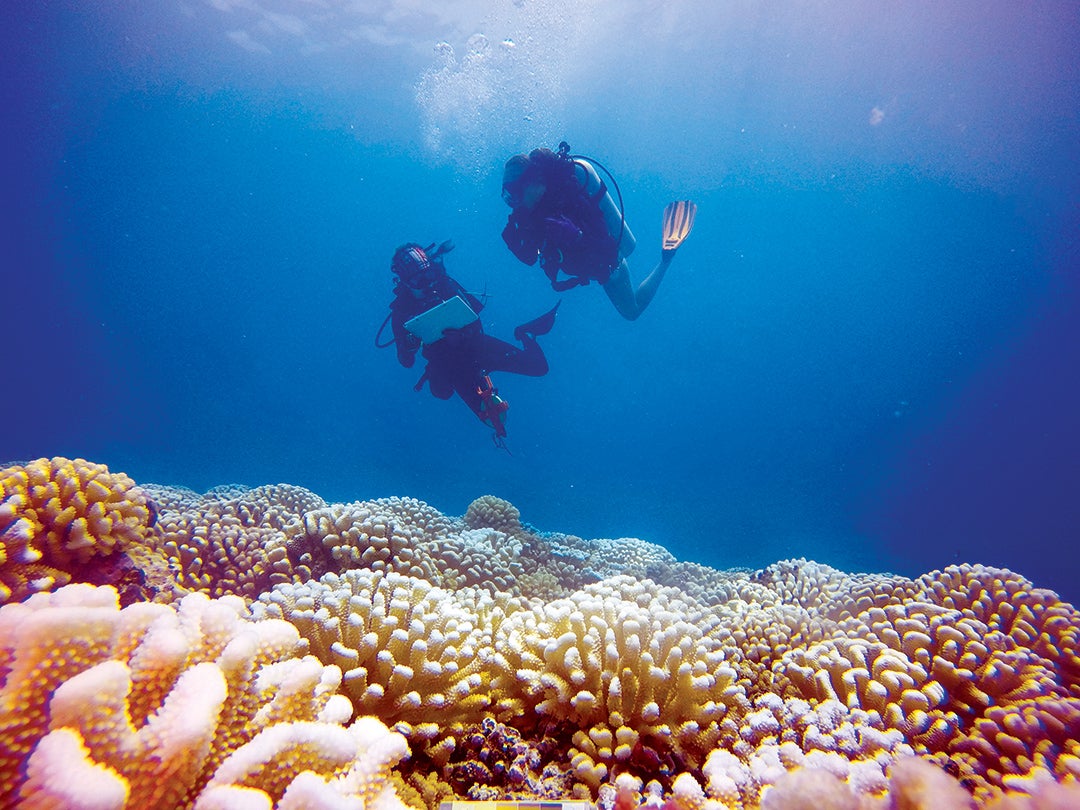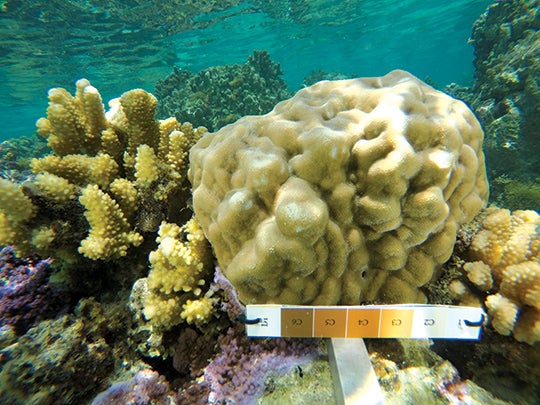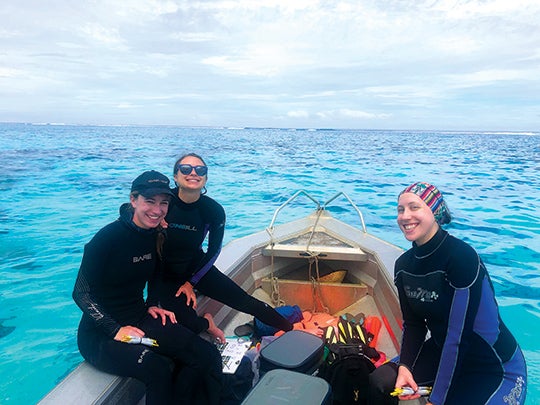In Hot Water
Viruses that threaten coral reefs thrive in increased global temperatures.

Summer 2023
By Jade Boyd
The breathtaking colors of reef-building corals come from photosynthetic algae that live inside the corals. A groundbreaking three-year study has found that viruses may increase their attacks on these symbiotic algae during marine heat waves, which are increasing in frequency due to global warming.
The study’s lead author, Lauren Howe-Kerr ’17, says coral and marine disease researchers are paying closer attention to coral viruses in the wake of studies in 2021 and 2022 suggesting viral infections might be responsible for stony coral tissue loss disease, which has been decimating reefs in Florida and the Caribbean since it was first identified in 2014.

Howe-Kerr’s study was the first to analyze the reefwide prevalence, persistence, triggers and health impacts of “dinoflagellate-infecting RNA viruses,” single-stranded RNA viruses that infect the symbiotic algae that live inside the corals. “It builds our understanding of coral viruses, and particularly RNA viruses that infect coral endosymbionts,” says Howe-Kerr, a Rice postdoctoral researcher who co-authored the study with more than a dozen colleagues from Rice and eight other universities and institutions.
“Our work provides the first empirical evidence that exposure to high temperatures on the reef triggers [RNA] infections within coral colonies, and we showed those infections are intensified in unhealthy coral colonies,” Howe-Kerr says.
The study was carried out at the Moorea Coral Reef Long-Term Ecological Research station in French Polynesia. Moorea, which is about 20 miles from Tahiti, is ringed by coral reefs. Samples from 54 coral colonies around the island were collected twice a year between August 2018 and October 2020, showing the warmest water temperatures in March 2019. Reefs across the island suffered heat-related stress during this period, including widespread bleaching.
Our work provides the first empirical evidence that exposure to high temperatures on the reef triggers [RNA] infections within coral colonies, and we showed those infections are intensified in unhealthy coral colonies.
The sampling and analysis were carried out during Howe-Kerr’s doctoral studies in the Rice lab of marine biologist and study co-author Adrienne Correa.

While all 54 colonies survived the three-year experiment, 50% suffered partial mortality. The hardest hit were ocean-facing “forereefs,” which were almost three times more likely to experience partial mortality than were corals in the fringing reefs, which may be more used to dealing with the high temperatures of the shallower waters close to shore, Correa says.
She says a wider variety of RNA viruses were found in heat-stressed colonies during the hotter temperatures in 2019, which suggests viral production had increased. And the pattern proved strongest in colonies that suffered partial mortality, which points to specific host-virus interactions that could drive ecosystem impacts.
“Viral productivity will likely increase as ocean temperatures continue to rise,” Correa says. “It’s important to learn as much as we can about host-virus interactions, because they have the potential to alter the foundational symbiosis that underpins coral reef ecosystems.”
Adrienne Correa is assistant professor of biosciences at Rice.
